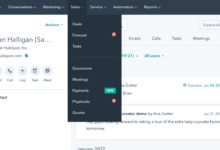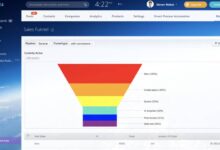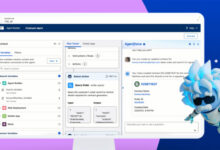Salesforce CRM Cost: 7 Shocking Truths You Must Know in 2024
Thinking about investing in Salesforce but unsure about the real Salesforce CRM cost? You’re not alone. Many businesses get blindsided by hidden fees, confusing pricing tiers, and unexpected add-ons. Let’s break down exactly what you’ll pay—and why.
Understanding the Core Salesforce CRM Cost Structure

Salesforce doesn’t have a one-size-fits-all price tag. Instead, its CRM cost is built on a modular, subscription-based model that scales with your business needs. Whether you’re a startup or an enterprise, the final price depends on the edition you choose, the number of users, and the features you activate. This flexibility is powerful—but it can also make budgeting tricky if you don’t know what to expect.
Breakdown of Salesforce Editions and Their Base Pricing
Salesforce offers several CRM editions, each tailored to different business sizes and functions. The base price per user per month varies significantly across these tiers. Here’s a detailed look at the most popular editions as of 2024:
Salesforce Essentials: Priced at $25/user/month, this is the entry-level option for small businesses with up to 10 users.It includes basic CRM features like contact management, lead tracking, and email integration.Salesforce Sales Cloud Professional: At $75/user/month, this edition adds workflow automation, advanced reporting, and territory management—ideal for growing sales teams.Salesforce Sales Cloud Enterprise: Priced at $150/user/month, this tier offers full customization, API access, and team collaboration tools..
It’s designed for mid-sized to large organizations needing deeper control.Salesforce Unlimited Edition: At $400/user/month, this is the most comprehensive package, including 24/7 support, sandbox environments, and advanced security features.These prices are listed on the official Salesforce website, but keep in mind they are just the starting point.Additional features, user licenses, and implementation costs can quickly inflate your total investment..
How User Licenses Impact Total Salesforce CRM Cost
The number of users directly affects your monthly bill. Salesforce charges per user, per month, billed annually. For example, a team of 20 using Sales Cloud Professional would pay $18,000 per year before any add-ons.
But not all users need full licenses. Salesforce offers light or community licenses for employees who only need limited access—like customer service reps viewing cases or partners accessing a portal. These can cost as little as $7–$15/user/month, helping reduce overall expenses.
It’s crucial to audit your team’s actual needs. Over-licensing is a common mistake that inflates the Salesforce CRM cost unnecessarily. Use role-based access planning to assign the right license type to each user.
Salesforce CRM cost – Salesforce CRM cost menjadi aspek penting yang dibahas di sini.
Contract Length and Billing Options
Salesforce typically requires annual contracts, which means you commit to a full year of service. While this locks in your rate, it also limits flexibility. Month-to-month plans are rare and usually come with a premium.
Billing is done annually in advance, though some resellers or partners may offer financing options. Longer contracts (2–3 years) might come with slight discounts, but they also reduce your ability to pivot if your business needs change.
“The biggest surprise for clients isn’t the sticker price—it’s the long-term commitment and lack of prorated refunds if you scale down mid-contract.” — CRM Consultant, TechGrowth Advisors
Salesforce CRM Cost by Edition: A Detailed Comparison
To truly understand the Salesforce CRM cost, you need to compare editions not just by price, but by value. Let’s dive into each major edition and what you actually get for your money.
Salesforce Essentials: Is It Worth It for Small Businesses?
Salesforce Essentials is marketed as the perfect starting point for small teams. For $25/user/month, you get a simplified interface, mobile access, and integration with Gmail and Outlook. It supports up to 10 users and includes basic automation for tasks and follow-ups.
However, it lacks advanced features like custom reporting, workflow rules beyond simple tasks, and API access. If your business plans to grow or integrate with other tools, you’ll likely outgrow Essentials quickly.
The real Salesforce CRM cost here isn’t just the monthly fee—it’s the future migration cost when you upgrade. Data migration, retraining, and downtime can add thousands to your total cost of ownership (TCO).
Sales Cloud Professional vs. Enterprise: Where’s the Break-Even Point?
The jump from Professional ($75) to Enterprise ($150) is significant. So when does it make financial sense?
- Professional Edition is ideal for teams that need standard CRM functionality with some automation. It includes assignment rules, sales forecasting, and basic dashboards.
- Enterprise Edition unlocks full customization, sandbox environments for testing, and API access for integrations. If you’re using third-party tools like ERP systems, marketing automation, or custom apps, Enterprise is often required.
The break-even point depends on your integration needs. If you’re building a connected tech stack, the $75 extra per user is justified by the time and developer cost savings. Otherwise, it’s an expensive overbuy.
Salesforce CRM cost – Salesforce CRM cost menjadi aspek penting yang dibahas di sini.
Service Cloud and Marketing Cloud: Hidden Cost Drivers
While Sales Cloud is the most common starting point, many businesses expand into Service Cloud or Marketing Cloud—each with its own pricing model.
- Service Cloud Professional: Starts at $75/user/month. Adds case management, knowledge base, and omnichannel support (email, chat, phone).
- Marketing Cloud: Priced differently—often starting around $1,500/month for basic email marketing, but can exceed $25,000/month for enterprise plans with Journey Builder and Advertising Studio.
These clouds are not included in Sales Cloud editions. Adding Service Cloud to your Sales Cloud Enterprise users means paying for dual licenses—effectively doubling your per-user cost in some cases.
According to Gartner research, companies that integrate multiple Salesforce clouds see a 30–50% increase in their annual CRM spend within two years.
Hidden Costs That Inflate Your Salesforce CRM Cost
The listed price is just the tip of the iceberg. The true Salesforce CRM cost includes many hidden or indirect expenses that businesses often overlook during planning.
Implementation and Onboarding Fees
Implementing Salesforce isn’t a DIY project for most companies. You’ll likely need a consultant or partner to configure the system, migrate data, and train users.
Implementation costs vary widely:
- Small businesses: $5,000–$15,000
- Mid-sized companies: $25,000–$75,000
- Enterprises: $100,000+
These fees depend on data complexity, number of integrations, and customization needs. Some firms charge hourly ($150–$300/hour), while others offer fixed-price packages.
Even if you use Salesforce’s free Trailhead training, onboarding your team takes time—time that translates to lost productivity and salary costs.
Salesforce CRM cost – Salesforce CRM cost menjadi aspek penting yang dibahas di sini.
Customization and Development Expenses
Salesforce is highly customizable, but every custom field, workflow, or Apex code adds cost. If your business has unique processes, you’ll need developers to build and maintain them.
Common customization costs include:
- Custom objects and fields: $2,000–$10,000
- Automated workflows and approval processes: $3,000–$15,000
- Apex triggers and classes: $100–$150/hour for certified developers
Over time, these changes accumulate. A study by Nucleus Research found that companies spend an average of 1.5x their annual license fee on customization and support.
Third-Party App Integrations and AppExchange Costs
The Salesforce AppExchange hosts over 5,000 apps that extend functionality—from e-signatures to AI-powered analytics. While many are free, premium apps add up fast.
- DocuSign for Salesforce: $25–$50/user/month
- ZoomInfo integration: $50+/user/month
- FinancialForce Accounting: $100+/user/month
These are billed separately and often require their own implementation. Worse, some apps don’t play well together, leading to data sync issues and troubleshooting costs.
Always test integrations in a sandbox first. Unexpected compatibility problems can delay go-live dates and increase consulting fees.
How Company Size Affects Salesforce CRM Cost
Your business size doesn’t just determine how many licenses you need—it shapes your entire cost structure, from licensing to support.
Cost for Small Businesses (1–50 Employees)
Small businesses typically start with Essentials or Sales Cloud Professional. For a 10-person sales team on Professional Edition, the annual license cost is $9,000.
Salesforce CRM cost – Salesforce CRM cost menjadi aspek penting yang dibahas di sini.
But with implementation ($10,000), training ($2,000), and a few AppExchange apps ($1,200/year), the first-year total jumps to $22,200—more than double the subscription cost.
Tip: Negotiate with Salesforce partners. Some offer bundled onboarding packages at discounted rates for small businesses.
Mid-Sized Companies (51–500 Employees)
Mid-sized firms often use Enterprise Edition with multiple clouds. A 200-user organization on Sales Cloud Enterprise ($150/user) pays $360,000 annually in licenses alone.
Add Service Cloud for 100 support agents ($75/user): +$90,000/year. Implementation for a complex rollout: $50,000–$100,000. Custom development: $50,000+/year.
Total first-year cost: $550,000–$600,000. Ongoing annual cost: $450,000–$500,000.
At this scale, having an in-house Salesforce admin or team becomes cost-effective. The average salary for a Salesforce Administrator is $85,000/year, but they can save tens of thousands in external consulting.
Enterprise Organizations (500+ Employees)
Enterprises use Unlimited Edition, multiple clouds, and deep customizations. Licensing alone can exceed $1 million per year.
Additional costs include:
Salesforce CRM cost – Salesforce CRM cost menjadi aspek penting yang dibahas di sini.
- Dedicated Salesforce success managers
- Multiple sandbox environments
- Advanced security and compliance features
- Custom app development teams
Many enterprises sign multi-year strategic agreements with Salesforce, which may include volume discounts but also lock them into long-term commitments.
According to a Forrester Total Economic Impact™ study, large companies see a 3-year ROI of 286% from Salesforce, but only after overcoming a steep initial investment curve.
Ways to Reduce Your Salesforce CRM Cost
You don’t have to pay full price. With smart planning, you can significantly lower your Salesforce CRM cost without sacrificing functionality.
Negotiate Pricing and Leverage Discounts
Salesforce rarely gives discounts publicly, but they’re available. Nonprofits get up to 50% off. Educational institutions also qualify for special pricing.
For for-profit businesses, negotiation is key. If you’re buying 100+ licenses or signing a multi-year contract, ask for a discount. Partner-led deals often have more flexibility than direct sales.
Timing matters. Salesforce’s fiscal year ends in January, so Q4 (October–December) is the best time to negotiate—they’re pushing to meet quotas.
Optimize User Licenses and Roles
Many companies over-license users. A customer service agent doesn’t need a $150 Enterprise license if they only view cases. Use Service Cloud User or High-Volume Customer Portal licenses instead.
Conduct a quarterly license audit. Deactivate inactive users and downgrade those with excessive permissions. This can save 15–30% on annual costs.
Salesforce CRM cost – Salesforce CRM cost menjadi aspek penting yang dibahas di sini.
Leverage Free Tools and Trailhead Learning
Salesforce offers a wealth of free resources. Trailhead is a gamified learning platform with free courses on administration, development, and best practices.
Training your team internally reduces reliance on paid consultants. A single certified admin can handle routine tasks like user management, report creation, and basic automation—saving thousands per year.
Salesforce Alternatives and Their Cost Comparison
If Salesforce’s pricing feels out of reach, several alternatives offer similar functionality at lower costs.
HubSpot CRM: Free Tier and Scalable Pricing
HubSpot CRM offers a robust free plan with contact management, email tracking, and deal pipelines. Paid tiers start at $20/month for basic sales features.
For $1,400/month, you get the Sales Hub Enterprise plan (10 users), which includes automation, custom reporting, and SLA management—comparable to mid-tier Salesforce.
Pros: Simpler interface, lower entry cost. Cons: Less scalable for complex enterprises, fewer customization options.
Microsoft Dynamics 365: Integrated with Office 365
Dynamics 365 starts at $65/user/month for Sales Professional. If your team already uses Microsoft 365, integration is seamless.
It’s particularly cost-effective for organizations invested in the Microsoft ecosystem. Licensing can be bundled, reducing per-user costs.
Salesforce CRM cost – Salesforce CRM cost menjadi aspek penting yang dibahas di sini.
However, customization requires Power Platform expertise, and implementation can be as complex as Salesforce.
Zoho CRM: Budget-Friendly with Strong Features
Zoho CRM starts at $14/user/month (billed annually) for the Standard plan. The Enterprise plan is $52/user/month—less than half of Salesforce’s Professional edition.
It includes AI-powered insights, workflow automation, and multi-channel communication. For small to mid-sized businesses, Zoho offers 80% of Salesforce’s functionality at 40% of the cost.
Downside: Support can be slower, and the user interface feels less polished.
Future Trends Impacting Salesforce CRM Cost
The CRM landscape is evolving fast. New technologies and pricing models will shape how much you pay for Salesforce in the coming years.
AI and Einstein Analytics: Premium Pricing for Smart Features
Salesforce Einstein AI is no longer a free add-on. Advanced AI features like predictive lead scoring, opportunity insights, and automated data entry are now part of premium packages.
Einstein Analytics starts at $75/user/month on top of your existing license. For AI-powered sales forecasting or service recommendations, you’ll pay extra.
As AI becomes standard, expect Salesforce to bundle it into higher-tier editions, pushing more users toward expensive plans.
Salesforce CRM cost – Salesforce CRM cost menjadi aspek penting yang dibahas di sini.
Subscription Fatigue and Demand for Usage-Based Pricing
Businesses are growing tired of per-user pricing, especially for tools used occasionally. Salesforce has experimented with consumption-based models for Marketing Cloud (e.g., pay per email sent).
Future editions may introduce hybrid pricing—base fee plus usage-based add-ons. This could lower costs for teams with fluctuating needs but add complexity to billing.
Increased Competition Driving Innovation and Discounts
With rivals like HubSpot, Zoho, and Freshworks gaining market share, Salesforce may be forced to offer more competitive pricing or value-added bundles.
We’re already seeing more partner incentives and nonprofit discounts. In the next 2–3 years, expect Salesforce to introduce mid-tier packages that bridge the gap between Professional and Enterprise at a lower price point.
Real-World Case Studies: What Companies Actually Pay
Theoretical pricing is one thing—real-world costs tell a different story. Let’s look at three actual companies and their Salesforce CRM cost breakdown.
Tech Startup with 15 Employees
Needs: Sales pipeline management, basic automation, email integration.
Solution: Salesforce Sales Cloud Professional ($75/user/month).
Users: 10 sales reps, 2 managers, 3 customer success agents.
Annual License Cost: 15 × $75 × 12 = $13,500.
Implementation: $8,000 (partner-led).
AppExchange Apps: $1,500/year (DocuSign, Mailchimp).
Total Year 1 Cost: $23,000.
Ongoing Annual Cost: $15,000.
Mid-Sized Manufacturing Company (200 Employees)
Needs: Sales, service, and field service management.
Solution: Sales Cloud Enterprise + Service Cloud Enterprise.
Users: 120 sales, 60 service agents, 20 managers.
Annual License Cost: (120 × $150 × 12) + (60 × $150 × 12) = $216,000 + $108,000 = $324,000.
Implementation: $75,000.
Custom Development: $60,000/year.
AppExchange: $20,000/year.
Total Year 1 Cost: $579,000.
Ongoing Annual Cost: $464,000.
Global Retail Chain (1,500 Employees)
Needs: Unified CRM across sales, service, marketing, and commerce.
Solution: Salesforce Unlimited Edition + Marketing Cloud + Commerce Cloud.
Annual License Cost: ~$1.8 million.
Implementation & Integration: $500,000.
Custom Apps & Sandboxes: $300,000.
Dedicated Admin Team: $400,000/year.
Total Year 1 Cost: ~$3 million.
Ongoing Annual Cost: ~$2.5 million.
Salesforce CRM cost – Salesforce CRM cost menjadi aspek penting yang dibahas di sini.
What’s the average Salesforce CRM cost?
There’s no single answer. For small businesses, expect $20,000–$50,000 first-year cost. Mid-sized firms: $300,000–$600,000. Enterprises: $1M+.
How can I get a personalized quote?
Visit salesforce.com and request a demo. A Salesforce rep will assess your needs and provide a tailored quote. Alternatively, work with a Salesforce partner for a more objective evaluation.
Is Salesforce worth the cost?
For companies that fully leverage its capabilities, yes. Salesforce improves sales productivity, customer retention, and data-driven decision-making. But only if you invest in proper implementation and training. Otherwise, it becomes an expensive digital filing cabinet.
Can I switch from another CRM to Salesforce?
Absolutely. Many businesses migrate from HubSpot, Zoho, or Dynamics. Data migration tools and consultants can help, but expect to spend 20–30% of your first-year license cost on the transition.
Salesforce CRM cost – Salesforce CRM cost menjadi aspek penting yang dibahas di sini.
Does Salesforce offer a free trial?
Yes. Salesforce offers a 30-day free trial for most editions. You can explore features, import sample data, and test workflows. No credit card is required for the trial.
Understanding the true Salesforce CRM cost goes far beyond the monthly subscription. It’s a combination of licensing, implementation, customization, and ongoing management. While the platform offers unmatched power and scalability, it demands careful financial planning. By auditing your needs, negotiating wisely, and leveraging free resources, you can harness Salesforce’s potential without breaking the bank. The key is to view it not as a software purchase, but as a strategic investment in your customer relationships.
Further Reading:


